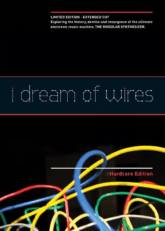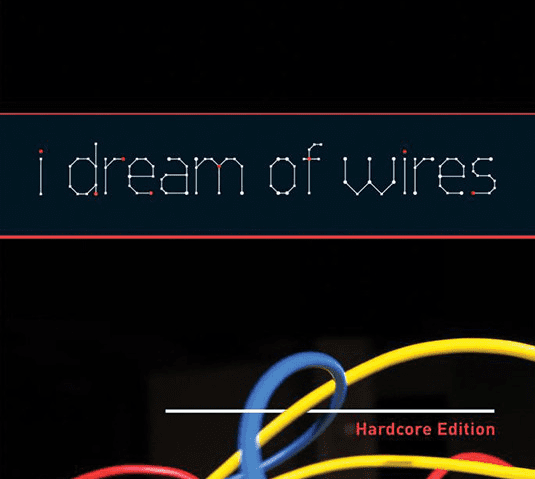The extended cut of this engrossing modular synth documentary demands serious time investment but offers a thorough history of a technology intertwined with personal relationships and creative processes.
“I don’t want to make music as anyone knows it,” Morton Subotnick
recalls telling analogue synth pioneer Don Buchla in the mid 1960s. For the last half a century, that’s exactly what modular synthesis has represented: an alternative to conventional approaches. The mainstream appeal of modular synths was small even when they were the only option in the brave new world of electronic music, but they became even more specialist when cheaper, more compact synths hit the market in the early 1970s, and their popularity continued to fluctuate over the following decades as fashions changed and new technologies altered the musical landscape further.
 Fifty years on from the release of Bob Moog and Don Buchla’s first modular synths, the technology has never been more widely available, more affordable and – dare we say it – more fashionable, with the revitalisation of the market in recent years
Fifty years on from the release of Bob Moog and Don Buchla’s first modular synths, the technology has never been more widely available, more affordable and – dare we say it – more fashionable, with the revitalisation of the market in recent years
driven largely by the emergence of the compact Eurorack format.
Histories of synthesis all too often rush through the modular’s pivotal late 1960s role in an effort to leap ahead to the glamour of Minimoogs, OB-8s and Prophet-5s, the affordability of DX7s and the dominance of Japanese manufacturers. As soon as more affordable compact synths become commonplace in the early 70s, modulars are relegated to footnotes and afterthoughts. It’s understandable. Even the most ardent proponent of the benefits of modular would surely concede that modular formats remained the preserve of a small but passionate group of niche enthusiasts for much of the 1970s, 80s and well into the 90s.
But with interest in modular synthesis now greater than ever, the time is right to recap the story of its development, the modular’s turbulent time in the wilderness and, arguably the most interesting factor of all: its rebirth as a genuine alternative to mass-market synths.
This, the so-called Hardcore Edition extended cut of the I Dream Of Wires modular synth documentary, was originally intended for limited release only. Overwhelming demand has driven the filmmakers to make it available as a general release on DVD and Blu-ray. Over the course of its four-hour length, I Dream Of Wires explores every aspect of modular synthesis. Starting with Columbia University’s RCA Mark II valve synth and Bob Moog’s early experiments with theremins and oscillators, the documentary charts the course of the modular synth’s early dominance of the electronic music world, its slow and gradual decline over the next few decades and finally its recent renaissance.
It’s the personal stories which resonate the strongest; the links between musicians, their instruments, and the pioneers who designed them. The film tells a story in which technology and art are inextricably intertwined. Drawing on Morton Subotnick’s outline of a new electronic instrument, Buchla returned with a device Subotnick dubbed an “electronic music easel”; a new approach to synthesis and electronic music composition was born.
Over in Canada, composer Gustav Ciamaga used Bob Moog’s early voltage-controlled oscillators in his role as head of the electronic music lab at the University of Toronto, but required the ability to control the tone of the sound in addition to its pitch. A request to Moog led to the development of tools for shaping the timbre of the raw oscillators. Bob set about developing filters including the 904A voltage-controlled low-pass circuit, the patented design of which is still the foundation of countless Moog synths and effects to this day.
It’s the personal stories which resonate the strongest; the links between musicians, their instruments, and the pioneers who designed them.
Modular synths somehow go hand in hand with personal stories. The manufacture of synth modules themselves has, after all, always been associated much more closely with individuals, small companies and enthusiastic amateurs than it has with the corporate giants who eventually came to dominate the keyboard market. But it’s not just about manufacturers. Once the mass appeal of synthesisers exploded in the early 80s, personal relationships with electronic instruments changed again.
Take that DX7 for example: with over 160,000 units sold, all of which could draw on banks of presets without any hard work on the part of the performer, could you really say that the average owner was as personally invested in the instrument as the typical modular synth owner of the 1960s or 70s? That’s not a criticism of mass-produced synths, per se – without them the field of electronic would be radically different today – but it goes a small way to explaining what makes modular synths inspire the passion on display in I Dream Of Wires.
As we run through the decades, the personal tales continue. We move away from the impact of the original innovators and into a uniquely democratic, connected world of synth technology. Prices drop, modular synths eventually come back into vogue, but the community aspect of their design, manufacture and use becomes even more prominent. Where the earliest modular synth owners and users tended to be clustered around university music departments and big budget studios, the modular synth owner of today is more likely to be found on internet forums discussing new modules with manufacturers based in garages or basements half way around the world.
But the focus on technology shouldn’t distract from the practical application of synthesisers. I Dream Of Wires also engages with the art of music making and the question of integrating these sometimes challenging instruments into a creative process. Fittingly, the film’s producer Jason Amm’s all-modular soundtrack is suitably wonky in places while also demonstrating the fact that modulars can be tamed and used to make more than just the stereotypical bleeps and bloops.
Is it a documentary strictly for the hardcore modular synth fan? Taken as a whole, maybe. But even the filmmakers admit that this sprawling work is best viewed in more easily managed chunks. You could accuse the Hardcore Edition of I Dream Of Wires of being bloated and even self-indulgent, but you could say the same thing about many of the synths which it contains. To many, that’s part of the attraction. Either way, this is as thorough a study of the unique appeal of modular synths as you’ll find.

04.21 PM
I love it, just bought it a while ago!
01.04 PM
Wonderful documentary. With 4 hours I did not get enough! I also created a review for a Belgian webzine Tout Ce Qui Sonne (toutcequisonne.com/instruments/i-dream-of-wires-documentaire-autres/)